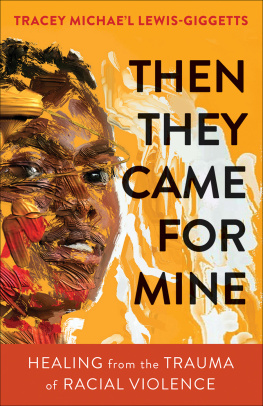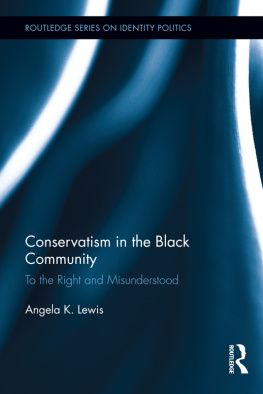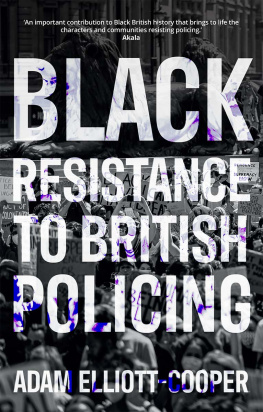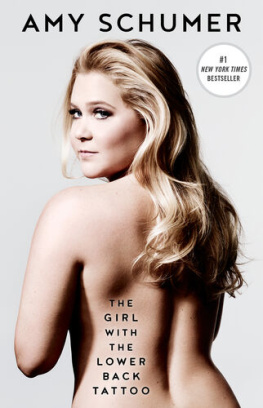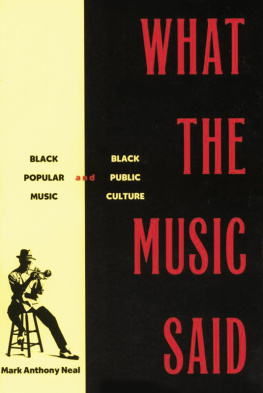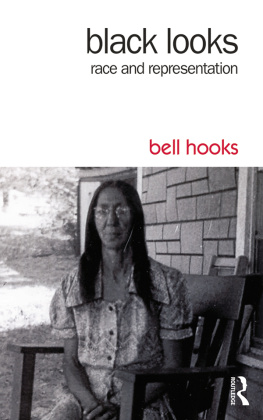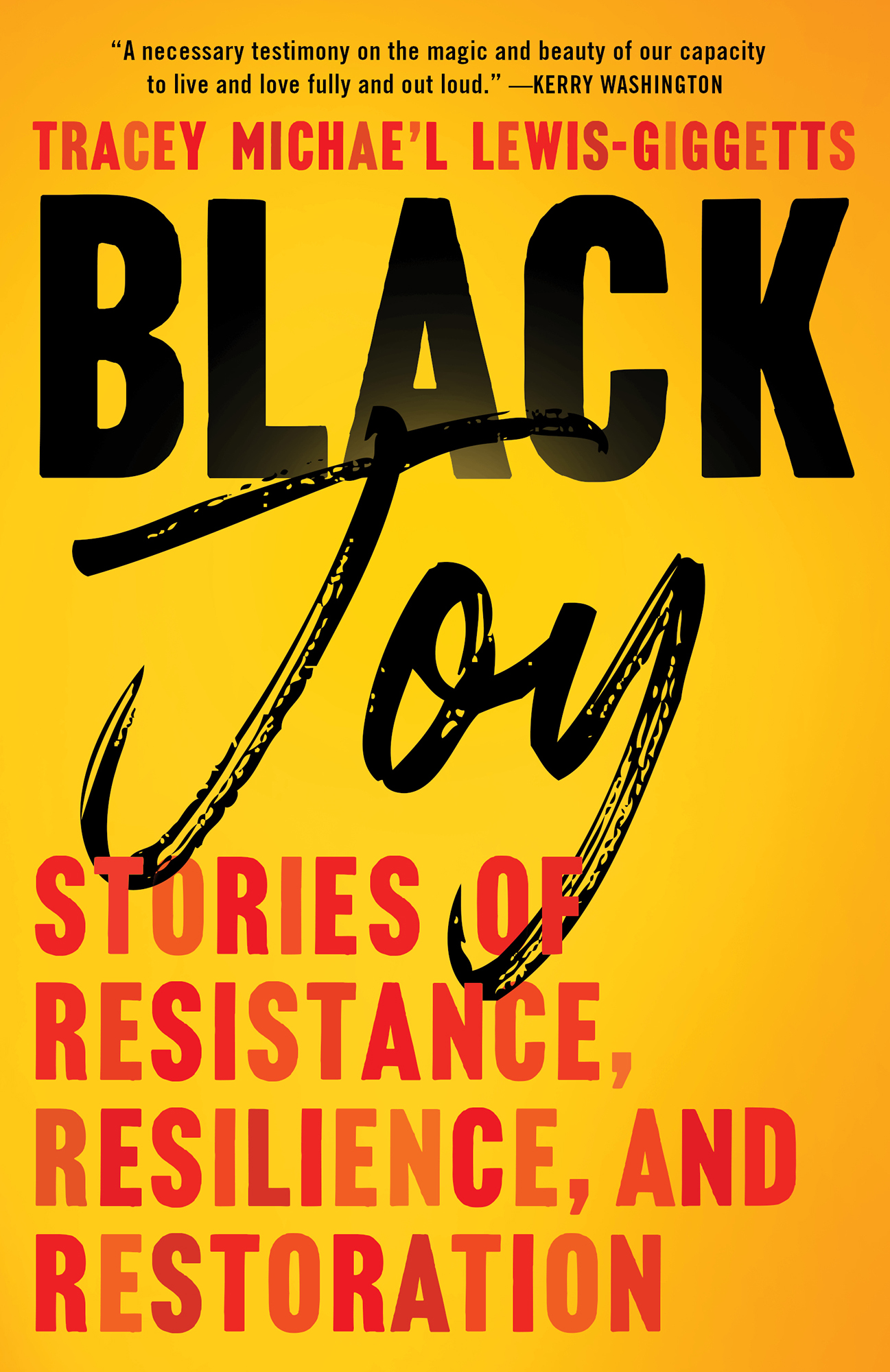Contents
Guide
A necessary testimony on the magic and beauty of our capacity to live and love fully and out loud.Kerry Washington
Tracey Michael Lewis-Giggetts
Black Joy
Stories of Resistance, Resilience, and Restoration

Gallery Books
An Imprint of Simon & Schuster, Inc.
1230 Avenue of the Americas
New York, NY 10020
www.SimonandSchuster.com
Copyright 2022 by Tracey M. Lewis-Giggetts
Some essays in this collection appeared in slightly different form in the following publications and have been published with permission:
Dancing in the Rain and the Power of Black Joy as Resistance, The Washington Post, June 2020
The Blacker the Love, Essence, March/April 2021
Someday It Might Snow in April: The Healing Power of Prince as Nothing Compares 2 Prince, Dame Magazine, April 2016
Born to Wash Cars, MyBrownBaby.com, October 2014
Do You Love What You Feel? as How Bodywork Helped Me Find Healing from Trauma, Catapult Magazine, April 2020
All rights reserved, including the right to reproduce this book or portions thereof in any form whatsoever. For information, address Gallery Books Subsidiary Rights Department, 1230 Avenue of the Americas, New York, NY 10020.
First Gallery Books hardcover edition February 2022
GALLERY BOOKS and colophon are registered trademarks of Simon & Schuster, Inc.
For information about special discounts for bulk purchases, please contact Simon & Schuster Special Sales at 1-866-506-1949 or .
The Simon & Schuster Speakers Bureau can bring authors to your live event. For more information or to book an event, contact the Simon & Schuster Speakers Bureau at 1-866-248-3049 or visit our website at www.simonspeakers.com.
Jacket design by Emma A. Van Deun
Jacket art by Adobe
Author photograph by Makayla Simone
Library of Congress Cataloging-in-Publication Data
Names: Lewis-Giggetts, Tracey M., author.
Title: Black joy : a strategy for resistance, resilience, and restoration / Tracey Michael Lewis-Giggetts.
Description: First Gallery Books hardcover edition. | New York : Gallery Books, 2022. | Summary: Black joy is unique and deeply rooted in the cultural experiences and expressions of Black people. Its ever-present and yet often hidden Black joy has a sound. Provided by publisher.
Identifiers: LCCN 2021023278 (print) | LCCN 2021023279 (ebook) | ISBN 9781982176556 (hardcover) | ISBN 9781982176563 (paperback) | ISBN 9781982176570 (ebook)
Subjects: LCSH: African AmericansPsychologyAnecdotes. | African AmericansSocial conditionsAnecdotes. | Conduct of lifeAnecdotes. | Joy.
Classification: LCC E185.86 .L495 2022 (print) | LCC E185.86 (ebook) | DDC 305.896/073dc23
LC record available at https://lccn.loc.gov/2021023278
LC ebook record available at https://lccn.loc.gov/2021023279
ISBN 978-1-9821-7655-6
ISBN 978-1-9821-7657-0 (ebook)
To MaKayla:
May your joy always be limitless and liberating
There is no time for despair, no place for self-pity, no need for silence, no room for fear. We speak, we write, we do language. That is how civilizations heal.
Toni Morrison, The Nation, March 23, 2015
INTRODUCTION Does Joy Have a Color?
T racey, youre not very kind to yourself.
I remember those words as clearly as if it happened today. About six years ago, I came to my now former pastor for guidance. His office was draped in rich, dark browns, with black leather chairs and tasteful gold accents. I chose the sorrel leather couch that sat ominously in the middle of the room, sure that it had seen its share of tears and, maybe, sweat. The pastor perched behind a huge wooden desk that dwarfed his laptop. A globe and thick texts lined the bookshelves that took up nearly all of one wall. In hindsight, it was a lot to take in. You know how a room and place speaks to you? Tells you about its owner? Reveals the nature of its work? This office was that kind of place. And yet my mind was somewhere else. My heart was looking for something, anything, and hoping Id find it in that office. Yes, Id come because I needed help sorting through some specific challenges, but I also wanted to figure out a larger direction that made sense; a path that felt divine. I found myself in a place where all of the hats I was wearing, all of my identitieswriter, wife, teacher, motherwere colliding into one another and I needed a kind of extraction from a reality that, frankly, Id manufactured.
So his words startled me. Shook is probably more accurate.
I dont know what you mean, I said.
I mean, I did. But who wants to concede something like that? Admittedly, this man and I would eventually butt heads on a number of things. Theology. His leadership style. And normally, Id be ready to debate. I found myself often anticipating something off coming from him. But his simple statement couched in a conversation about my life purpose unearthed an understanding Id chosen to not acknowledge. It hit me hard because it was true. I was not kind to myself at all.
There were a myriad of ways I could have been kind to myselfextending myself grace when a mistake was made, asking for what I want, or resting when I knew Id been grinding too hard. This rejection of self-compassion was an interesting position to be in when you consider that Id done all the things. Id written about the healing power of creativity and art from a cultural standpoint. Spoken on numerous platforms about racial justice and reconciliation. Named myself a curator of Black joy through the arts. I knew how to be happy. I knew what Black joy should look like. I could manufacture it at the drop of a dime. But I struggled with true compassion for myself. My critiques of every minute detail (the way I looked, moved, laughed; what I enjoyed) and my work (my writing, teaching) were swift. They were harsh. I worked myself into the ground for outside validation so I could feel the love and acceptance I should have been able to give myself. I had all the makings of Black joy but no recognition of it as something inherent to me, and therefore had no ability to hold it for a lifetime. Gratefully, this has changed for me. I hope it changes for many of us.
For me, the change shows up as the dancing and bed jumping I do with my nine-year-old daughter on one of our mommy-daughter trips to Atlantic City. Tapping into a purity of delight that I never before gave myself permission to experience feels like a warm hug on a cold day. Other times, its the cheesy grin that comes across my face while watching my favorite nighttime drama. Im a sucker for good storytelling, and choosing to enjoy a show as opposed to dissecting it is a gift. The feeling of joy in my body is intense and weighty and necessary. And, in the end, most of the moments Ive taken to embrace joy and self-compassion are wrapped in my cultural understanding of who I am as a Black woman.
When attempts are made to define what liberation and equity looks like for Black people, we often hear the language of striving and collective burdens. And rightfully so. Our history is filled with the evidence that struggle and dogmatic persistence has been integral to our four-hundred-year-long freedom project. But as more and more studies reveal, the lens of struggle as the means to freedom has not come without a cost. The physical, psychological, and spiritual impact of racial trauma has often found us crossing the finish line of every battle war torn and broken from the inside out. As a writer, storyteller, and Black contemplative, Im not sure I can ignore this for much longerespecially when there is another significant tool in our arsenal. One that not only deeply disturbs the racist systems we are trying to dismantle but also offers a direct path to healing and wholeness as we do so. That weapon is powerful and all-encompassing and necessary. That weapon is joy.


